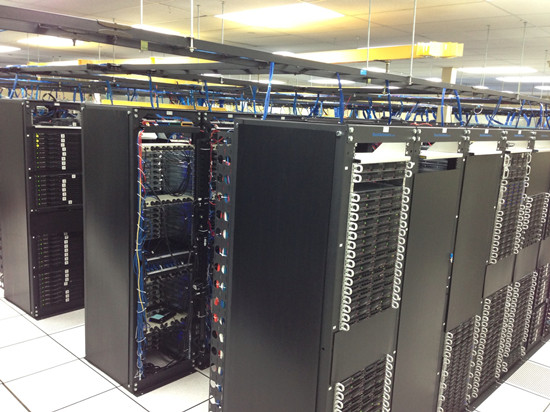Data center houses a network’s most critical systems and is vital to the continuity of daily operations. Many of us have seen what it looks like. As we all know, the more complex a data center is, the more difficult it can be to ensure efficiency and orderly management—not only of the systems and equipment, but of the working staff as well. How to simplify data center management? This post may give you the answer.

When several different types of product, tools and resources are used to support a network, complication cannot be avoided. With the rapid development of society, many business demands require the data center to operate quickly and effectively. In order to achieve this goal, various mix-and-match occur, which lead to a complicated data center. Here are several tips to simplify data center management and make it work efficiently.
With the fast advancement of communications, equipment used in data centers is replaced frequently. Therefore, product standardization is something to keep in mind when upgrading and replacing the equipment, as well as the infrastructure that supports it. By utilizing standardized data center hardware, maintenance can be finished smoother and faster with common approaches, which save time, resources and money.
A complicated data center environment makes it difficult to identify the root cause of errors or misconfigurations. So selecting some easy installation and space-saving products means shorter installation times, less training time for staff and lower maintenance costs. There are many examples of products that make installation and maintenance simpler for data centers. Here are some examples.
Designed to deliver maximum connectivity performance in a minimal footprint according to standards, LC uniboot patch cable uses a single, unified jacket for both fibers. With this unique structure, it allows up to 68% space-saving in cabling volume, offering easier maintenance and operability. Besides, LC fiber optic connectors can offer higher density and performance in most environments, which makes it popular in many applications.

Push-pull tab patch cable has a special “pull” tab design that enables the connector to be disengaged easily from densely loaded panels without the need for special tools, allowing users easy accessibility in tight areas when deploying in data center applications. With this unique design, high-density fiber cables, such as MPO/MTP fiber cables, offer high density connections between network equipment in telecommunication rooms and data centers. They can be easily installed or removed with one hand, which improve efficiency greatly.
Fiber enclosure is designed to house, organize and manage fiber connections, terminations, and patching in all applications, providing the highest fiber densities and port counts in the industry contributing to better rack space utilization and minimizing floor space. Loaded with different numbers of FAPs, HD fiber enclosures offer a high-density flexibility for cabling installations of data centers to maximize rack space utilization and minimize floor space.

Of course, except for the cables and enclosures mentioned above, other small components in data centers also cannot be ignored. For instance, cable ties and labels also play a critical role in cabling installations of data centers. In a word, every detail should be taken into consideration when managing a data center.
As we have mentioned above, under this rapid development environment, data centers should be equipped to handle current needs while offering a clear path for future technology requirements. Complex data centers can be simplified when components are deployed that allow you to grow and migrate to new systems in the future without compromising performance or reliability. For example, solutions that offer support for both traditional ST and SC and modern LC and MPO applications support cost-effective, simpler migration to 40G and 100G applications with only a simple cassette or adapter frame change.
When data center processes and components are simplified, installation and maintenance become easier and less costly, staff resources are freed up for more strategic tasks, troubleshooting becomes less cumbersome and migration is also more easily achieved. All components mentioned above are available in FS.COM. Welcome to visit our website for more detailed information.
Sources:http://www.fiber-optic-components.com/tips-to-simplify-your-data-center-management.html
















